ESS-13 is pumped or poured directly into the water at a pre-determined application rate. The seepage in your pond will decrease 60% to 90% initially, and this original rate will continue to improve with time.
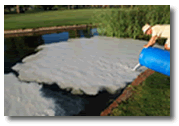
Click here for more information.
The ESS-13 “Spray-On Formulation” can save
75% or more off the installation costs of other lake sealing methods.
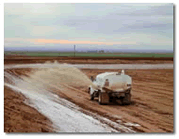
Click here for more information.
ESS-13 is pre-mixed with our E-13 compaction aid, pumped in pre-measured quantities into the soil with conventional earth moving equipment. The treated soil is then compacted in two consecutive six inch layers.
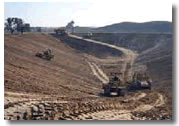
Click here for more information.
Address:
115 S. Weber Drive Suite 2
Chandler, AZ 85226 USA
Toll Free Phone: 1.800.214.9640
Local Phone: 480.763.1180
Fax: 480.763.1182
info@seepagecontrol.com
|
Professor's Perspective
Explanation for the Effect of the Soil Sealant ESS-13 on Hydraulic Conductivity
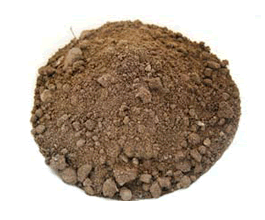 In observing the effect of vegetable oil/water emulsions (prepared in my laboratory) on the rate of water flow through saturated coarse soil columns (hydraulic conductivity), I have noted the following: In observing the effect of vegetable oil/water emulsions (prepared in my laboratory) on the rate of water flow through saturated coarse soil columns (hydraulic conductivity), I have noted the following:
1. The effect of the oil/water emulsion in reducing water flow is essentially immediate.
2. The effect in reducing water flow persists for days to weeks.
3. The oil/water treatment reduces, rather than increases, the elution of colloidal clay from the column.
Based on these facts, I propose the following mechanism that operates to decrease hydraulic conductivity, even in very coarse-textured soils.
1. The application of a fine emulsion of oil in water, stabilized by the presence of an anionic surfactant (sulfonate), when applied to the soil surface, allows oil droplets to enter initially air-filled or water-filled pores. It is likely that larger pores, which are responsible for most of the water permeability of the soil, are preferentially filled by oil droplets.
2. Further movement of water into the oil-filled pores is prevented by the high surface tension of the oil-water interface. Water is unable to displace the oil phase or dilute its effect because of the lack of mixing between oil and water, and because there is normally insufficient water pressure to force the viscous oil through most pores.
3. The flow velocity of water through the soil is greatly reduced because of the much higher viscosity of oils compared to water (e.g., at 20oC, cottonseed oil has a viscosity of 70.4 centipoise compared to 1.0 for water). The Darcy flow equation shows the important effect of the liquid viscosity on flow velocity:
V = Q / t A = k’ Δp / η L
Where:
V = average water flow velocity over the cross-sectional area, A, of the porous soil
Q = quantity of water flow obtained in time t
Δp = pressure difference between the top and bottom faces of the porous soil column of length , L.
k’ = permeability (hydraulic conductivity) of the soil, affected by soil-specific factors such as size of pore channels, channel tortuosity.
The viscosity, η , is normally not explicitly shown in the flow equation, since the flowing liquid is usually water. However, the strong effect of viscosity on flow rate is clearly shown by this form of the equation which includes viscosity, indicating that an oil phase, if distributed evenly on the soil, could greatly slow water flow through the soil column by blocking pores.
Summary: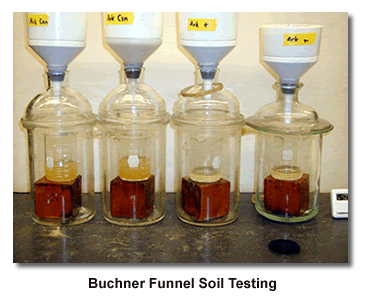
The above mechanism provides a physical explanation for the observed change in water flow behavior after soil treatment with ESS-13, including the fact that it is immediate and that dispersion of colloidal particles does not appear to be important to the effect. In fact, reduced colloid migration through the soil that I observed is consistent with macropores, which are largely responsible for preferential flow of water and migration of clay, being preferentially blocked by the treatment. Water flows too slowly through micropores for these pores to contribute significantly to colloidal transport. Thus, the possible clay-dispersing effect of the surfactant is probably not important in changing the water flow properties of the soil. The surfactant is, however, very important in stabilizing the fine oil-water emulsion that maximizes the homogeneous distribution of oil to the soil surface pores. In cases where the surfactant mix, ESS-13, causes some reduction in hydraulic conductivity when used alone, there must be some dispersion of clay particles by the surfactant which leads to blockage of small pore channels in the soil. This mechanism, in my view, would not be highly effective in more coarse-textured soils with larger pore size.
Longer term, more complex processes may serve to either enhance or diminish the initial soil sealing effects. The growth of bacteria on the biodegradable oil could lead to the formation of a biofilm, which itself could cause the lower water flow properties to persist. Conversely, oil molecules could eventually be adsorbed to mineral surfaces, shrinking the size of the oil droplets in pores, and leading eventually to a reopening of pores. However, both of these processes are likely to be inhibited by the saturated conditions of the soil, which are not conducive to oxidative decomposition of the oil by microbes or the molecular adsorption of oil molecules onto mineral or organic particles in the presence of excess water.

|




 In observing the effect of vegetable oil/water emulsions (prepared in my laboratory) on the rate of water flow through saturated coarse soil columns (hydraulic conductivity), I have noted the following:
In observing the effect of vegetable oil/water emulsions (prepared in my laboratory) on the rate of water flow through saturated coarse soil columns (hydraulic conductivity), I have noted the following:






 Seepage Control, Inc.
Seepage Control, Inc.